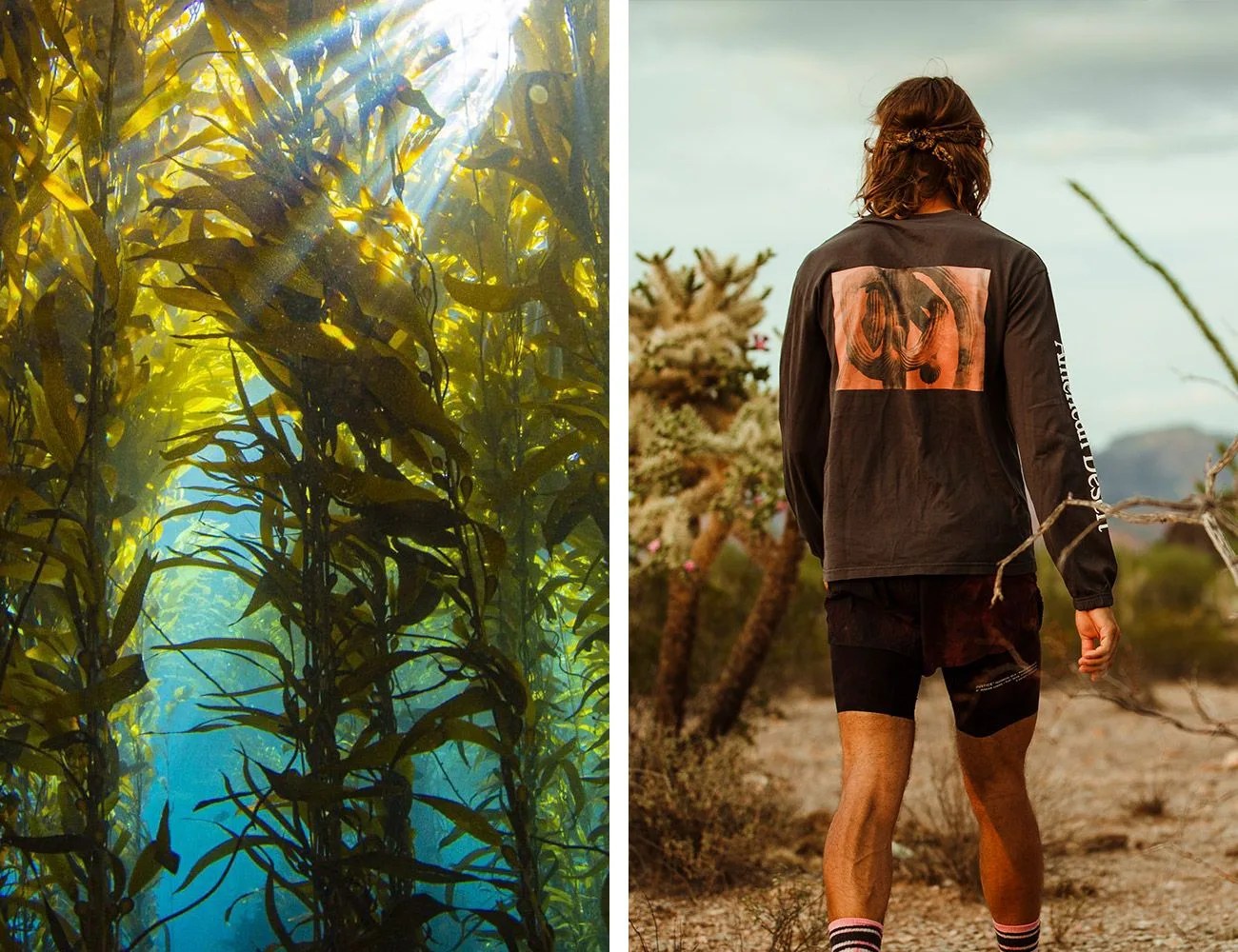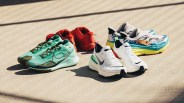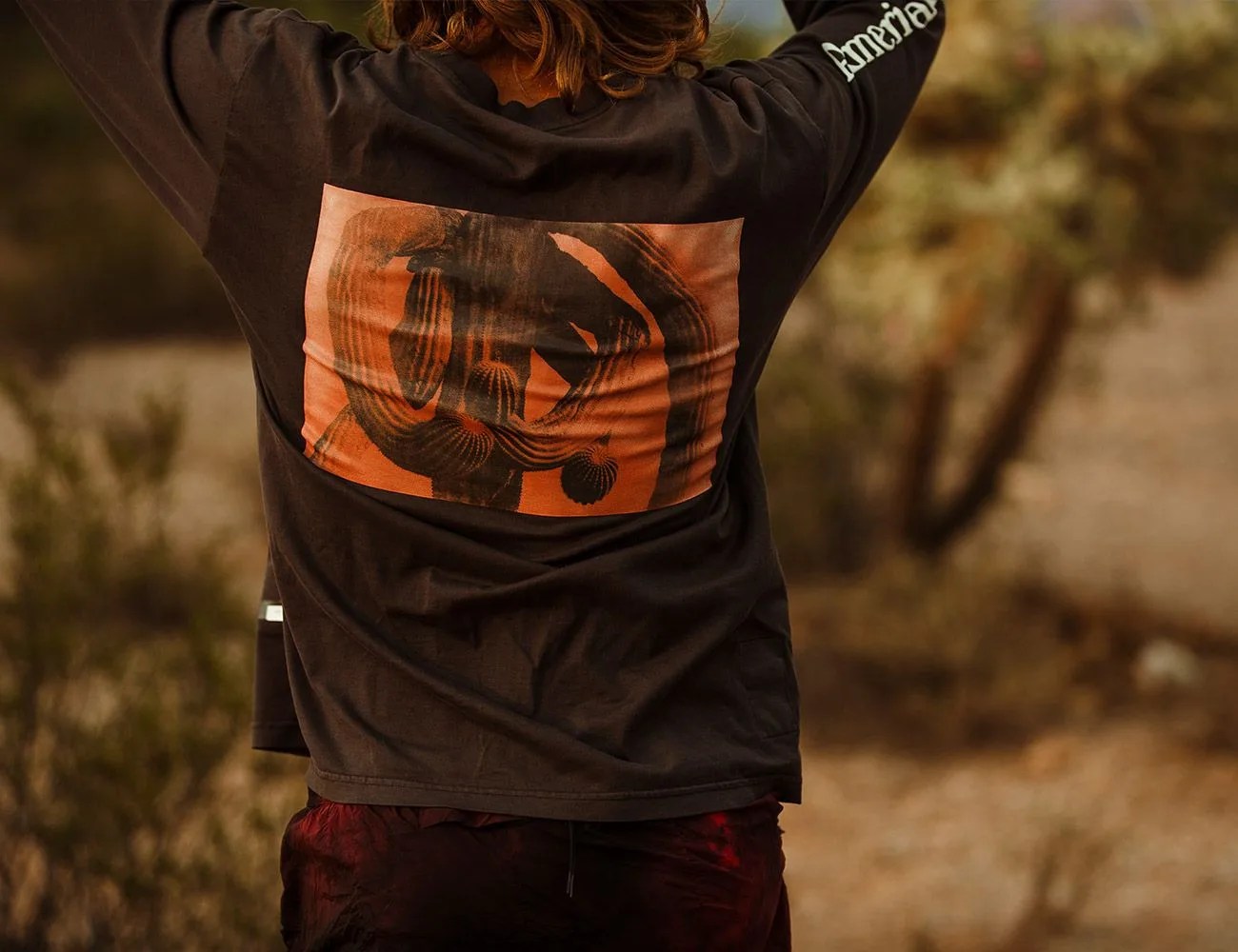With the drop of Satisfy’s American Desert line, the Parisian running brand introduces a sustainable bio-based fabric for post-run recovery that’s plucked from the ocean. The new batch of Cosmetic Tees — classic tees, muscle tees, and long-sleeved shirts adorned with photography by Jungjin Lee — feature seaweed-derived SeaCell, a fiber with health and environmental advantages that, for some, might be worth the $200-plus price tag.
Seaweed is loaded with vitamins, minerals and antioxidants, and taking advantage of its beneficial properties isn’t anything new. For thousands of years, seaweed has been harvested for food, fuel, fertilizer, skincare, medicine and recently, even skis. The Ancient Romans used it to dress wounds (it’s still being used in medical innovations today), while 17th Century Japanese textile makers used seaweed to make clothing stronger. Now, modern technologies have further adapted the marine plant’s usability, incorporating it into fabric production to create garments that lock the health benefits into wearable fabrics.
“The idea of incorporating SeaCell into our Cosmetic Tees was to create a post-run collection that accelerated the recovery process,” explains Satisfy founder Brice Partouche. “[These garments] have an anti-oxidative capacity which eliminates free radicals while caring for the wearer’s skin.”

After a run, natural moisture levels enable an active exchange of those restorative substances between the shirt and skin, which can repair cellular damage, reduce inflammation and soothe itchiness. While wearing a seaweed-woven shirt might not offer T-1000-like regeneration, any improvement in oxidative stress is more than any other T-shirt can do.
The environmental impact of this seaweed-based fabric is also worth shouting out. SeaCell is 100 percent biodegradable and produced solely from sustainable raw materials—seaweed and wood. “The seaweed is first washed, dried, carefully ground and then incorporated into an organic cotton fiber,” explains Partouche. In case you’re thinking that you’d be wearing a seaweed shirt held together with a bit of cotton, it’s really the other way around; the cotton-to-seaweed ratio is 80-to-20.)



